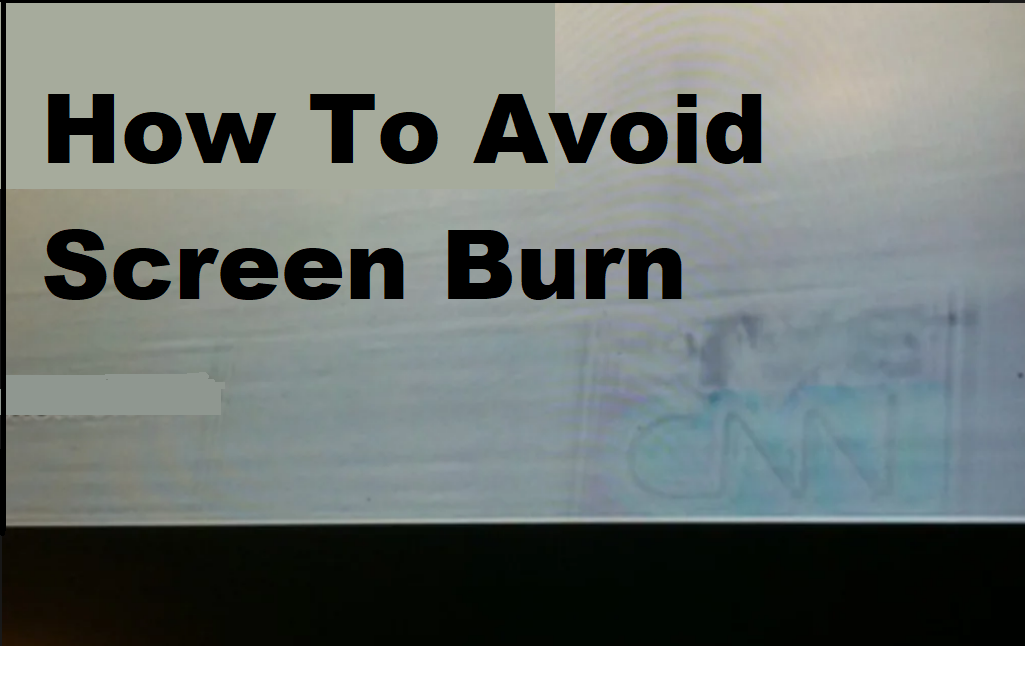Depending on the technology you are using for your display you may have questions that need answering such as, are you at risk of screen burn, what is screen burn and how to avoid screen burn. In this tech tip we will try and answer some of these questions for you.
Screen burn actually dates back to old CRT monitors, where phosphor compounds which emit light to produce images lost their luminescence over time. LCD panels which also use a phosphor back light can can also be seen to suffer the same issues but usually on a smaller scale. CRT monitors are rarely seen these days but the issue still is quite common with the new technology of OLED and especially with AMOLED found on most smart phones.
So what is Screen Burn
So what is Screen burn. Screen burn can sometimes be referred to as a Ghost image and it is described as the permanent discoloration of your monitor display or smartphone’s screen. The prolonged use of static images can create a permanent shadow or ghost of that image on the screen.
Screen burn is basically caused by the varying life-cycle of a display’s light-producing components. As these parts age, their brightness changes, and therefore the panels colour reproduction gradually shifts with time. You may notice that only some parts of the screen are effected and this is because some parts of the screen age faster than others. This can gradually shift the perceivable colours of the screen in one area more than in other, leaving what looks like a ghost image behind or even a discolouration around the edges of the screen.
How to Avoid Screen Burn
At this stage, manufacturers of OLED and AMOLED displays are working on ways they can prevent screen burn in their devices and invested heavily in this area. For starters, Samsung has been using its pentile subpixel arrangement in its AMOLED displays since the Galaxy S3. By making the blue subpixel larger, it requires less current to drive in order to provide the required light. Driving the LED with lower current increases its lifespan, such that it takes longer for any noticeable colour shift to occur.
This doesn’t directly address the issue of different parts of the screen ageing at different rates, but it does mean that it will take significantly longer to notice than with older or cheaper OLED panels.
If you are concerned about the issue, there are a number of preventative measures that you can take to prolong display lifetime and help to prevent the dreaded ghosting effect:
- Lower your screen brightness. The lower the brightness the less current is used which will prolong the life of your display.
- Do not display static images for long periods (such as still images, fixed images from PC or TV game equipment, and/or fixed images such as time of day indicator or channel logo display).
- Shorten your screen-off timer. Remember to turn off your screen when not in use. If you have a timer to turn off your display you can shorten that to a minimal duration.
- Use Immersive Mode, where available. This hides the notification bar, so static icons won’t be displayed. Alternatively, pick a launcher that offers a similar feature, as well as transparent navigation bar and app drawer options.
- Use darker colours. Pick a wallpaper with darker colors and change it every now and again. Most apps and browsers have a dark mode. Using a dark mode can be better on the eyes and help prevent screen burn in.
- Do not display content in the 4:3 aspect ratio (black or gray bars on left and right side of content) or letterbox content (black bars above and below content) for extended periods of time, or use either of these viewing modes repeatedly within a short period of time.
- On a mobile device try and use keyboards that offer darker themes to prevent colour degradation in the lower half of the display.
- If you use a navigation app regularly for long journeys, pick one that doesn’t have a lot of bright static UI elements.
- Turn off your peripheral monitor at the end of the day. You will also save on power.
The bottom line is that you should be looking at several year’s worth of work out of a modern display or smartphone display before any screen burn in will be noticeable. But it doesn’t hurt to be aware of what can happen to aging displays and how to maximise their lifespan.

